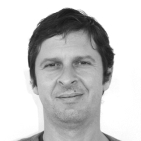Ultrasonic Sensors 2018
A special issue of Sensors (ISSN 1424-8220). This special issue belongs to the section "Physical Sensors".
Deadline for manuscript submissions: closed (31 October 2018) | Viewed by 176951
Special Issue Editors
Interests: ultrasonic based sensors; nonlinear acoustics; acoustically engineered materials; ultrasonic concentration and manipulation of particles; swept frequency acoustic interferometry; biomedical sensors and fluid characterization techniques
Special Issues, Collections and Topics in MDPI journals
Interests: ultrasonic-based sensors and methods; ultrasonic pulse-echo; ultrasonic interferometry; nonlinear acoustic methods; swept-frequency acoustic interferometry (SFAI); resonant ultrasound spectroscopy (RUS); high pressure–high temperature ultrasonic
Special Issues, Collections and Topics in MDPI journals
Special Issue Information
Dear Colleagues,
Ultrasonic sensors are widely used in a multitude of applications, in diverse industrial and nonindustrial settings. This Special Issue aims to highlight advances in the development of novel ultrasonic sensors, including modeling with applications in diverse fields. Topics include, but are not limited to:
- Non-destructive testing/material characterization
- Challenging environments: High/low temperature, pressure, radiation, corrosiveness
- Electroacoustic, magnetoacoustic, photoacoustic effects
- Remote sensing
- Ultrasonic imaging and visualization
- Industrial applications (oil and gas, geothermal, automotive, etc.)
- Physical acoustics (solids, liquids and gases)
- Medical and biomedical ultrasonic sensors
- Nonlinear acoustics
- Sensors based on metmaterials
Both review articles and original research papers in the field of ultrasonic sensors are solicited.
Dr. Dipen N. Sinha
Dr. Cristian Pantea
Guest Editors
Manuscript Submission Information
Manuscripts should be submitted online at www.mdpi.com by registering and logging in to this website. Once you are registered, click here to go to the submission form. Manuscripts can be submitted until the deadline. All submissions that pass pre-check are peer-reviewed. Accepted papers will be published continuously in the journal (as soon as accepted) and will be listed together on the special issue website. Research articles, review articles as well as short communications are invited. For planned papers, a title and short abstract (about 100 words) can be sent to the Editorial Office for announcement on this website.
Submitted manuscripts should not have been published previously, nor be under consideration for publication elsewhere (except conference proceedings papers). All manuscripts are thoroughly refereed through a single-blind peer-review process. A guide for authors and other relevant information for submission of manuscripts is available on the Instructions for Authors page. Sensors is an international peer-reviewed open access semimonthly journal published by MDPI.
Please visit the Instructions for Authors page before submitting a manuscript. The Article Processing Charge (APC) for publication in this open access journal is 2600 CHF (Swiss Francs). Submitted papers should be well formatted and use good English. Authors may use MDPI's English editing service prior to publication or during author revisions.
Keywords
- Acoustic sensing
- Acoustic signal processing
- Acoustical instruments and techniques
- Acoustic transduction
- Structural acoustics
- Bioacoustics
- Doppler effect
- Linear acoustics
- Nonlinear acoustics
- Underwater acoustics
- Structural acoustics
- Metamaterials







